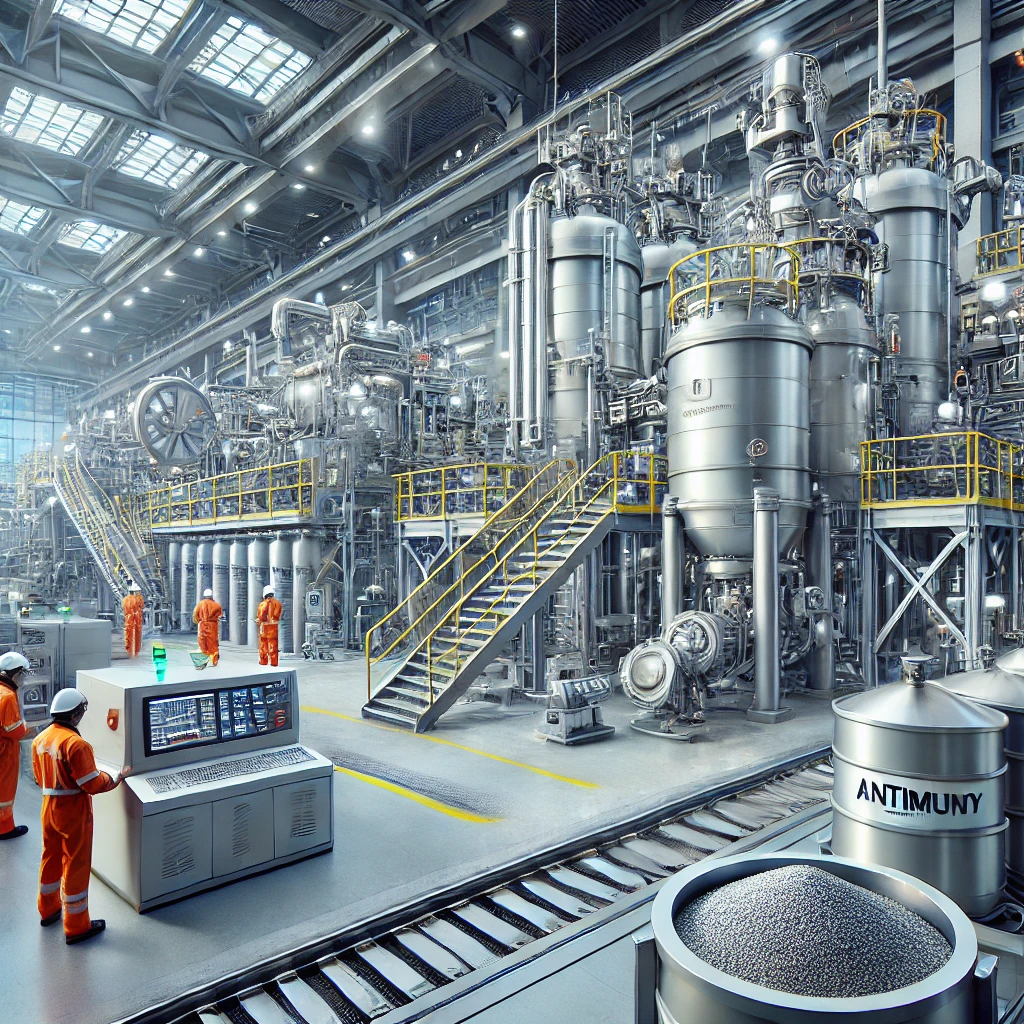How Antimony Concentrates are Processed for Industrial Use
Antimony concentrates, primarily sourced from antimony ore, are essential in producing various industrial materials, including flame retardants, alloys, and semiconductors. Processing antimony concentrates involves multiple steps to extract the desired antimony compounds and purify them for industrial applications. This blog delves into the processing techniques, their significance, and the role of antimony concentrates in driving industrial innovation.
What are Antimony Concentrates?
Antimony concentrates are refined materials derived from antimony ore, typically enriched with antimony sulfide (stibnite) or antimony oxide. These concentrates are processed into pure antimony or compounds like antimony trioxide (Sb₂O₃), which serve as raw materials for various industries.
Steps to Process Antimony Concentrates
1. Mining and Extraction
- Objective: Extract antimony ore from deposits through surface or underground mining.
- Methods:
- Open-pit mining for shallow deposits.
- Underground mining for deeper reserves.
- Key Output: Raw antimony ore containing impurities.
2. Crushing and Grinding
- Objective: Reduce ore size for easier processing.
- Process:
- Ore is crushed into smaller particles and then ground into a fine powder using ball mills.
- Key Output: Fine antimony concentrate suitable for separation techniques.
3. Concentration
- Objective: Separate antimony from impurities using physical or chemical processes.
- Techniques:
- Flotation: The most common method, where chemicals are added to create a froth that binds antimony particles, separating them from waste material.
- Gravity Separation: Uses the density difference between antimony and impurities to isolate the metal.
- Key Output: High-grade antimony concentrate.
4. Roasting
- Objective: Convert antimony sulfide into antimony oxide, making it easier to purify.
- Process:
- Antimony sulfide is heated in the presence of oxygen to produce antimony trioxide.
- Impurities are removed as byproducts.
- Key Output: Antimony trioxide, a critical industrial compound.
5. Smelting
- Objective: Extract metallic antimony from the concentrate.
- Process:
- The concentrate is heated in a furnace with reducing agents like carbon or iron.
- This process separates pure antimony metal from other compounds.
- Key Output: Pure antimony metal for industrial applications.
6. Refining
- Objective: Enhance the purity of antimony metal or compounds for specific uses.
- Techniques:
- Electrolytic Refining: Uses electrolysis to achieve high-purity antimony.
- Chemical Refining: Involves acid or alkali treatments to remove residual impurities.
- Key Output: High-purity antimony suitable for flame retardants, semiconductors, and other applications.
Industrial Applications of Processed Antimony Concentrates
1. Flame Retardants
- Usage: Antimony trioxide enhances the fire resistance of plastics, textiles, and coatings.
2. Alloy Production
- Usage: Metallic antimony is combined with lead and tin to create durable and corrosion-resistant alloys for batteries and machinery.
3. Electronics
- Usage: Antimony compounds are used in semiconductors, diodes, and circuit boards.
4. Energy Storage
- Usage: Advanced batteries, including lead-acid and molten-salt systems, rely on antimony for improved efficiency.
5. Glass and Ceramics
- Usage: Acts as a fining agent in glass manufacturing and adds color to ceramics.
Challenges in Processing Antimony Concentrates
Environmental Concerns:
- Mining and smelting can release toxic substances, impacting air, water, and soil quality.
Energy-Intensive Processes:
- Roasting and smelting require significant energy, contributing to greenhouse gas emissions.
Waste Management:
- Proper disposal of tailings and byproducts is essential to minimize environmental harm.
Complexity of Refining:
- Achieving high-purity antimony involves multiple refining steps, increasing costs and complexity.
Sustainable Practices in Antimony Processing
Eco-Friendly Mining:
- Adoption of renewable energy sources in mining operations.
Efficient Recycling:
- Recovering antimony from e-waste reduces dependency on mining.
Advanced Technologies:
- Use of AI and IoT for efficient processing and waste management.
Regulatory Compliance:
- Ensuring adherence to environmental and safety standards.
Future Trends in Antimony Processing
Green Chemistry:
- Development of less toxic chemicals for flotation and refining.
Automation:
- AI-driven solutions for optimizing processing efficiency and reducing energy consumption.
Global Collaboration:
- Industry partnerships to promote sustainable practices and improve supply chain resilience.
Innovative Applications:
- Research into antimony’s role in next-generation batteries and advanced materials.
Conclusion
The processing of antimony concentrates is a complex but essential process that enables its use in critical industrial applications. From flame retardants and electronics to energy storage and alloys, antimony plays a vital role in modern industries.
As demand for antimony continues to grow, adopting sustainable practices and leveraging advanced technologies will be crucial to meeting global needs while minimizing environmental impacts. By addressing challenges in processing and refining, the industry can ensure a reliable and eco-friendly supply of this valuable resource.
